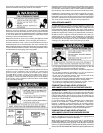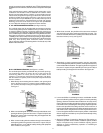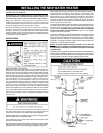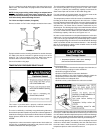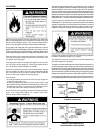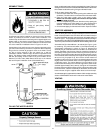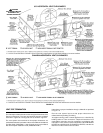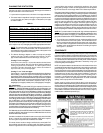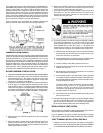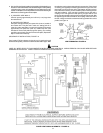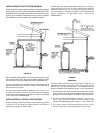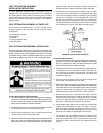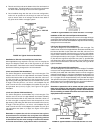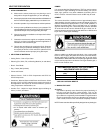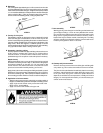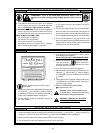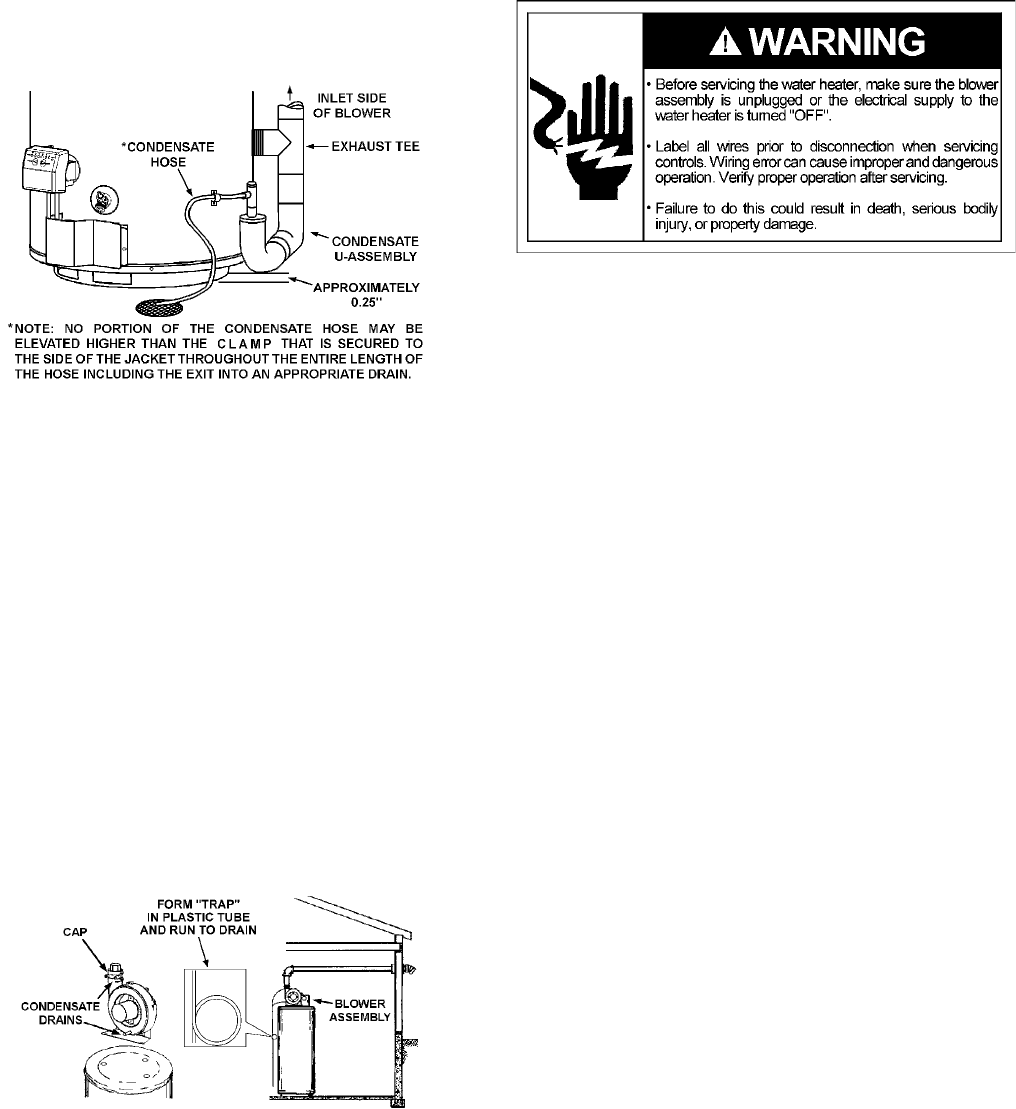
18
The condensate trap may be primed by filling the CONDENSATE U-
ASSEMBLY with tap water using the supplied hose while the water
heater is not operating. The system is fully primed when the hose is
lowered below the hose clamp on the side of the water heater and
water begins to flow out of the hose. In most installations the water
heater will self-prime the condensate trap during the first full heat-up
cycle. If a sound of air bubbling through water (gurgling) is heard while
the blower is operating after the first heat-up cycle, then turn the unit
off and contact your plumber or service representative.
If these instructions are not followed, the condensate build-up will
block the exhaust outlet, which will cause improper operation.
CONDENSATE SYSTEM - FIGURE 16
Condensate is likely to form in the venting system attached to this water
heater. The vent pipe should be sloped downward away from the blower
assembly (not less than 1/8" (3.2 mm) nor greater than 1/2" (12.7 mm)
per foot (30 cm) maximum). If the vent piping is vented level or sloped
upwards away from the blower assembly, then adequate means for
draining and disposing of the condensate needs to be made by the
installer. In either case, a 3/8" drain hose should be connected to the
built-in drain port. Prior to operating the water heater, make sure the
removable cap is installed on the second drain port, see Figure 17.
BLOWER ASSEMBLY INSTALLATION
1. This power vented water heater comes with the blower assembly installed.
2. After the unit is set in place, make sure the blower assembly is
still mounted securely. Also make sure that one of the drain
ports of the rubber boot vent adapter is capped off. Lastly, make
sure there is no damage to the blower.
3. Condensate drains from two locations on the blower assembly as
shown in figure 17. A condensate hose must be secured to form a
"trap" as shown in figure 17 for these condensate drain connections.
These two hoses may be connected together. The hose(s) should
be routed to a suitable drain. A fitting that may be used to join the
two hoses from the blower assembly is included in a supplied kit.
FIGURE 17.
4. Make sure there is no packing material in the inlet or discharge
of the blower.
5. Make sure that the plastic tubing is still attached from the air
pressure switch to the port on the blower housing. Make sure
the plastic tubing is not folded anywhere between the pressure
switch and the blower housing.
6. Make sure the ON/OFF switch is in the OFF position and that the
outer harness is connected from the blower control box to the
connector on the bottom side of the gas valve.
7. If the outer harness is not factory installed, make sure the ON/
OFF switch is in the OFF position and then connect the outer
harness from the blower control box to the connector on the
bottom side of the gas valve.
8. Do not plug in power cord until vent system is completely installed.
The Power Vent operates on 110-120 Vac. therefore a grounded
outlet must be within reach of the 6 foot (1.8 m) flexible power
cord supplied with the vent (See Figure 1). The power cord
supplied may be used on a unit only where local codes permit.
If local codes do not permit use of flexible power supply cord:
A. Make sure the unit is unplugged from the wall outlet. Remove
the plastic top cap. Remove screws and open panel on the
front of the control box on the blower.
B. Cut the flexible power cord, leaving enough to be able to make
connections. Remove the strain relief fitting from the box.
C. Install a suitable conduit fitting inside the enclosure.
D. Splice field wiring into existing wiring using code authorized
method (wire nuts, etc).
E. Be certain that neutral and line connections are not reversed
when making these connections.
F. Ground heater properly. This water heater must be grounded
in accordance with the National Electrical Code NFPA 70 or
the Canadian Electrical Code C22.1 and/or local codes. These
must be followed in all cases.
The water heater must be connected to a grounded metal,
permanent wiring system; or an equipment grounding
conductor must be run with the circuit conductors and
connected to the equipment grounding terminal or lead on
the water heater, see Figure 19.
G. Close the panel on the control box. Make sure that the access
panel is secured shut.
9. The blower discharge boot is made to accept only straight sections
of 2" pipe. To start off with an elbow, a short section of the furnished
pipe, a minimum of 2 inches (5.1 cm), must be cut and glued into
the end of the elbow that will mount on the discharge boot.
INSTALLATION OF VENT SYSTEM
Before beginning installation of piping system thoroughly read the
section of this manual VENT PIPE PREPARATION.
If you are installing your system so that it vents through roof, please
refer to section titled INSTALLATION OF VERTICAL VENT SYSTEM.
VENT TERMINAL INSTALLATION, SIDEWALL
1. Install the vent terminal by using the cover plate as a template to
mark the hole for the vent pipe to pass through the wall. BEWARE
OF CONCEALED WIRING AND PIPING INSIDE THE WALL.



